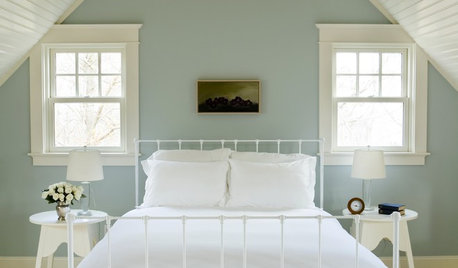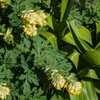Been trying, but still need help filling a bare spot!
janicej11
16 years ago
Related Stories

UPHOLSTERYSeeking a Quiet, Relaxed Spot? Try Upholstering Your Walls
Upholstery can envelop an entire room, a framed panel or a single wall. See some design options and learn what to expect
Full Story
GARDENING GUIDESHow to Fix Bare and Yellow Lawn Spots
Restore your turf’s good looks by reseeding unsightly patches
Full Story
SMALL HOMES16 Smart Ideas for Small Homes From People Who’ve Been There
Got less than 1,000 square feet to work with? These design-savvy homeowners have ideas for you
Full Story
KITCHEN COUNTERTOPSKitchen Counters: Granite, Still a Go-to Surface Choice
Every slab of this natural stone is one of a kind — but there are things to watch for while you're admiring its unique beauty
Full Story
KITCHEN DESIGNSee-Through Refrigerators Dare to Go Bare
Glass-front fridge doors put your food and drinks on display, for better or worse. See the benefits and disadvantages
Full Story
FARMHOUSESLight-Filled Artist’s Studio in the Pennsylvania Countryside
An architect creates a soaring space for a still-life painter that references the area’s history and her passion for horses
Full Story
SELLING YOUR HOUSESave Money on Home Staging and Still Sell Faster
Spend only where it matters on home staging to keep money in your pocket and buyers lined up
Full Story
PETSHow to Help Your Dog Be a Good Neighbor
Good fences certainly help, but be sure to introduce your pup to the neighbors and check in from time to time
Full Story
MOST POPULAR9 Real Ways You Can Help After a House Fire
Suggestions from someone who lost her home to fire — and experienced the staggering generosity of community
Full Story
COLOR12 Tried-and-True Paint Colors for Your Walls
Discover one pro designer's time-tested favorite paint colors for kitchens, baths, bedrooms and more
Full StorySponsored
Columbus Design-Build, Kitchen & Bath Remodeling, Historic Renovations





webkat5
Saypoint zone 6 CT
Related Discussions
how long wait - filling in new grass bare spots
Q
Update on my spot. I still need help. *pics*
Q
Has anyone ever filled bare spots with small cuts of sod?
Q
HELP! I have 12 Thuja w/ bare spots Will Prunning fill it in out?
Q
cbs_z5_ny
Donna
hostared
leslie197
chelone
janicej11Original Author
entling
leslie197
Donna
janicej11Original Author
ladychroe
janicej11Original Author
kyplantjunkie
leslie197
janicej11Original Author
greenthumb102
leslie197
janicej11Original Author
entling
leslie197
janicej11Original Author
christinmk z5b eastern WA
Donna